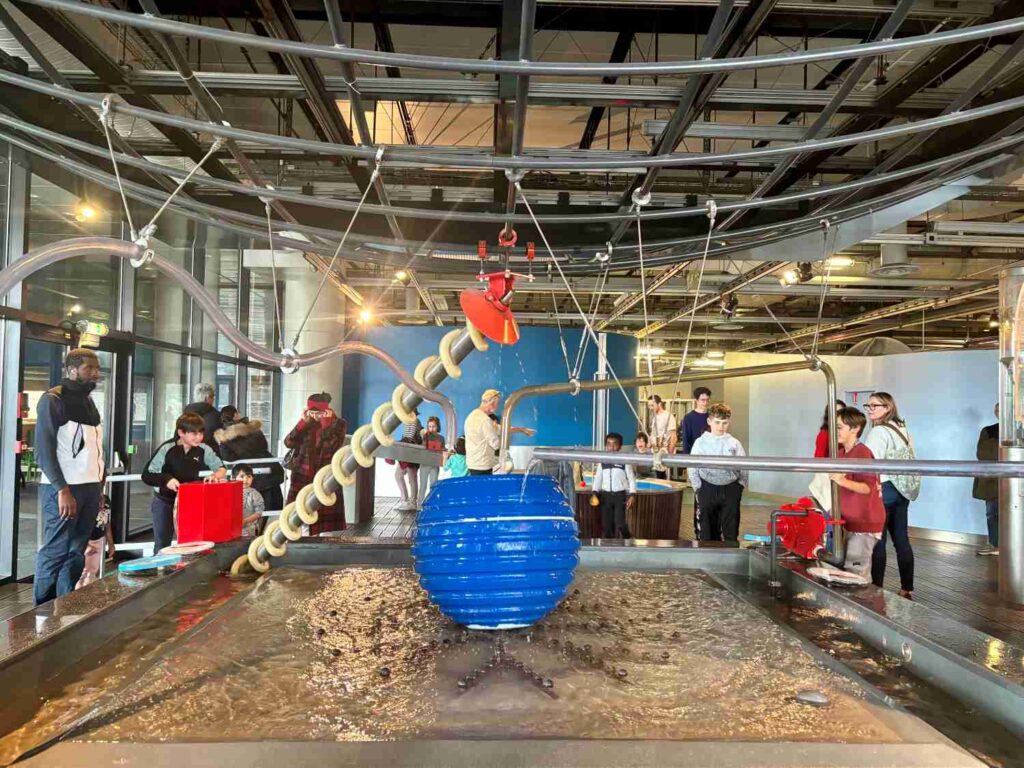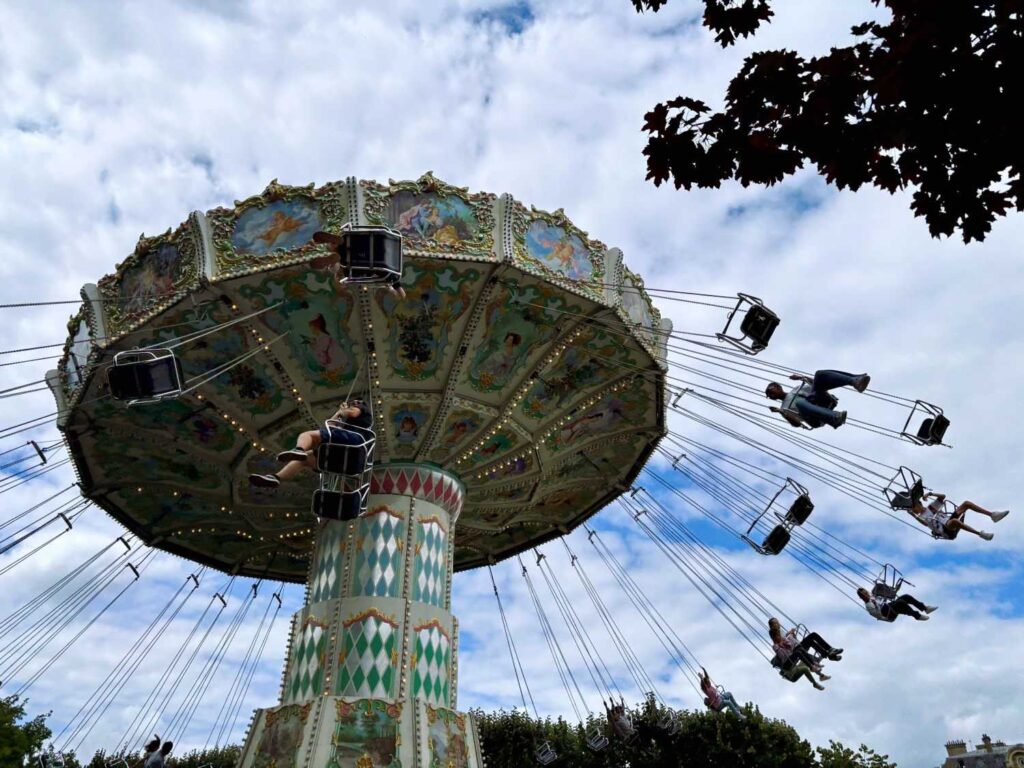Visiting the Élysée Palace during Heritage Days offers a unique glimpse into the grandeur and history of the French Republic. As the residence of the French President, it’s one of the most sought-after and exclusive experiences of the weekend. This year, we had the opportunity to visit this extraordinary venue in Paris with our two children (aged 5 and 9), and I’d like to share our experience—from the booking process to the palace visit itself. Whether you’re thinking of visiting the Élysée Palace yourself or are simply curious to learn more, I hope this helps!
In 2024, France’s Journées Européennes du Patrimoine (European Heritage Days) take place on Saturday, September 21st, and Sunday, September 22nd. This weekend opens many historical, cultural, and significant sites that are usually closed to the public.
A brief history of Heritage Days
The concept of European Heritage Days began in 1984, introduced by France’s then-Minister of Culture, Jack Lang. The idea was to provide public access to monuments, cultural sites, and historically significant buildings typically closed during regular hours. The initiative gained popularity, and in 1991, the Council of Europe officially adopted it as “European Heritage Days”. Soon after, the concept spread to multiple countries.
A brief history of the Élysée Palace
The Élysée Palace was originally built in 1718 by architect Armand-Claude Mollet for Louis Henri de La Tour d’Auvergne, Count of Évreux, and was called the Hôtel d’Évreux. Located in the heart of Paris, the palace showcases classic French Baroque architecture, with elegant salons, intricate interiors, and expansive gardens.
In 1753, King Louis XV purchased the palace for his mistress, Madame de Pompadour. She transformed it into a lavish symbol of her influence. After her death, the property passed through various aristocratic owners until the French Revolution, when it was nationalized. In 1805, Napoléon Bonaparte’s sister, Caroline Murat, acquired the building and renovated it into a luxurious imperial residence. After Napoléon’s fall, the palace changed hands several times, but in 1848, it became the residence of the French President.
The Élysée Palace has witnessed many significant moments in French and global history, from state banquets to pivotal political meetings. It remains a powerful symbol of French governance. Today, it continues to serve as both the official residence and workplace of the President of France.
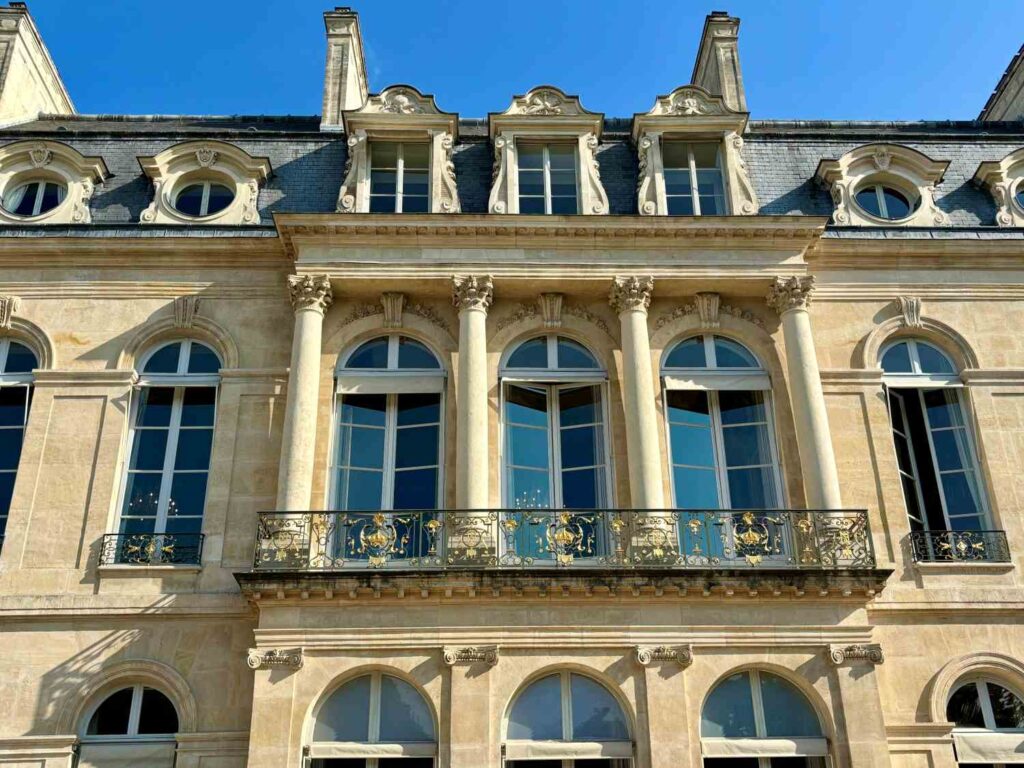
How to register for a visit to the Élysée Palace on Heritage Days
Pre-registration to visit the Élysée Palace on Heritage Days is essential. You cannot access the palace without prior registration. There is no separate line for walk-ins on the day. Spots are limited, and the palace receives an overwhelming number of requests each year. In 2024, registrations opened on September 16th, via the official Élysée website—just a week before the actual Heritage Days.
Once on the website, navigate to the section titled “Les Journées européennes du Patrimoine 2024 au Palais de l’Élysée” and click on “Pre-Registration.” Fill out the form, which asks for your contact details, place of birth, and preferred time slot. You can register up to six people per booking. So, you can even add family or friends who want to join. Shortly after, I received a hold email informing me that, depending on availability, a confirmation would follow in the next few days. In my case, I received the confirmation two days later, along with a link to download my tickets.
The first visit to the Élysée Palace begins at 8am, and the last entry is at 5.30p.m during the course of Saturday and Sunday. I recommend selecting the earliest time slot available to avoid long waits after going through security and before entering the palace itself.
Please note that the palace does not allow strollers inside. However, parents can leave strollers at the entrance and pick them up after the tour. We found the security staff to be very friendly, and they allowed families with babies or very young children to skip the line, making the experience smoother for parents.
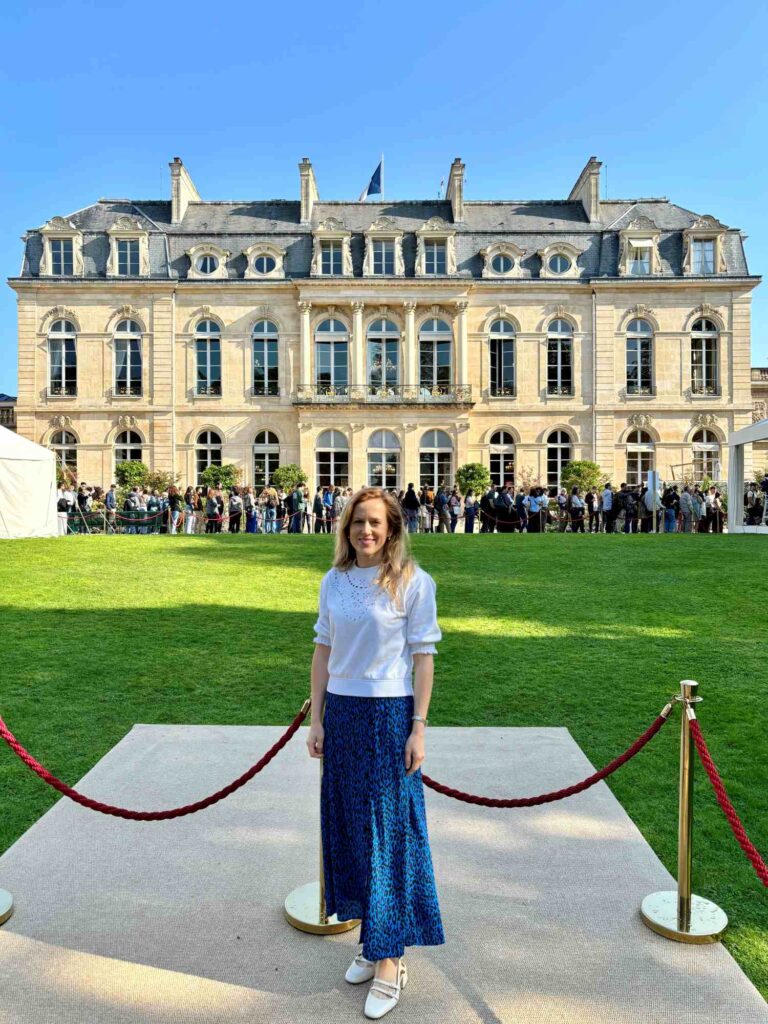
Arrival at the Élysée Palace
On the day of visiting the Élysée Palace, security was understandably tight, as expected for such a high-profile site. We went through multiple security checks before entering. Both our IDs and the invitations sent by email were carefully verified.
The invitation email instructed us to arrive at the designated meeting point 30 minutes before our booked time slot to pass through the security checks. However, we actually arrived 10 minutes late. I worried they wouldn’t let us through, but it turned out to be no problem at all. We waited about 30 minutes outside the palace to get in. As long as you arrive within the approximate time window, you should be fine to enter.
Once inside the grounds, we realized there was another fairly long line ahead to reach the palace itself. It took us about an hour to get through the queue. Luckily, the weather was warm and sunny, and there was some entertainment along the way, which helped keep the kids occupied. We were constantly moving, albeit slowly, so the wait wasn’t too bad.
Along the path, we stopped at a stand offering samples of Élysée Palace honey. Sadly, the jars weren’t available for purchase. Further along, we came across a display of recent photographs by professional photojournalists who follow the President of the Republic. It was interesting to see such an intimate glimpse into the life and duties of the French President.
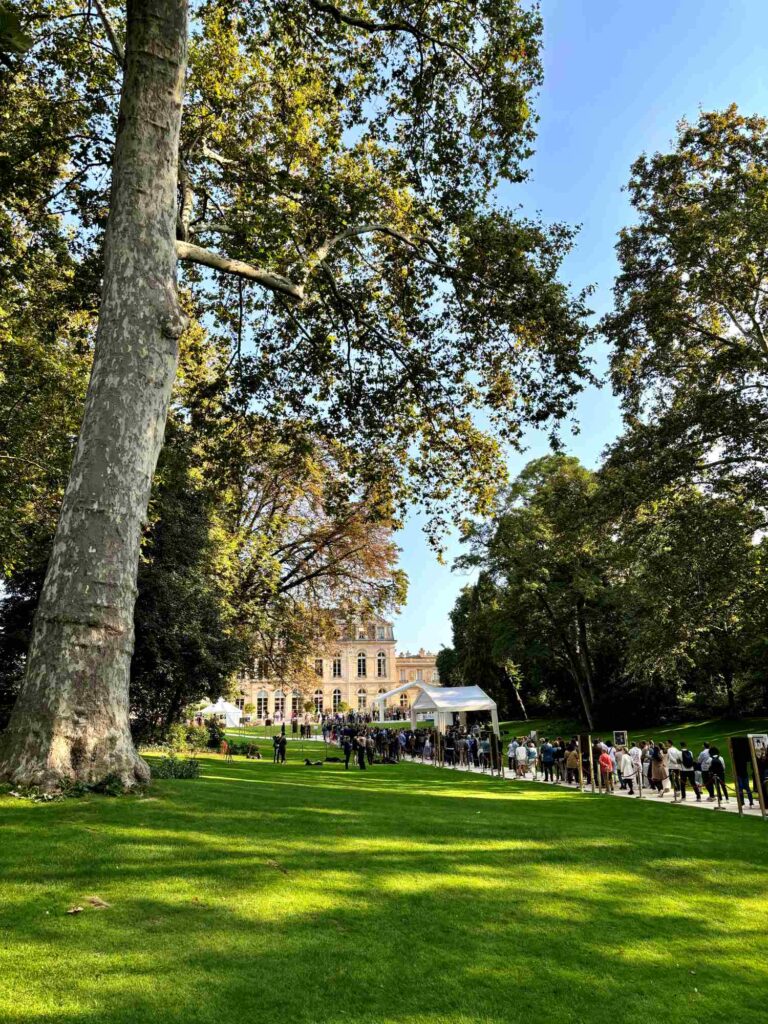
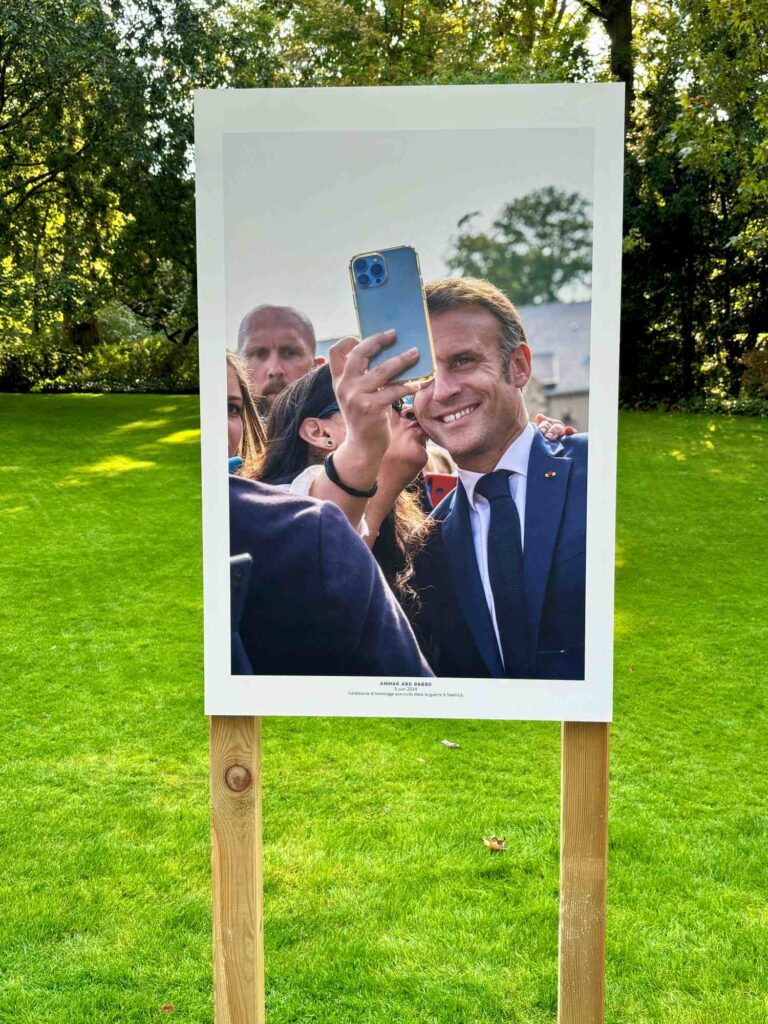
As we continued, we enjoyed live music performed by the Republican Guard and watched historical reenactments showcasing the clothing, trades, and techniques from the era of Caroline Murat in the 1800s.
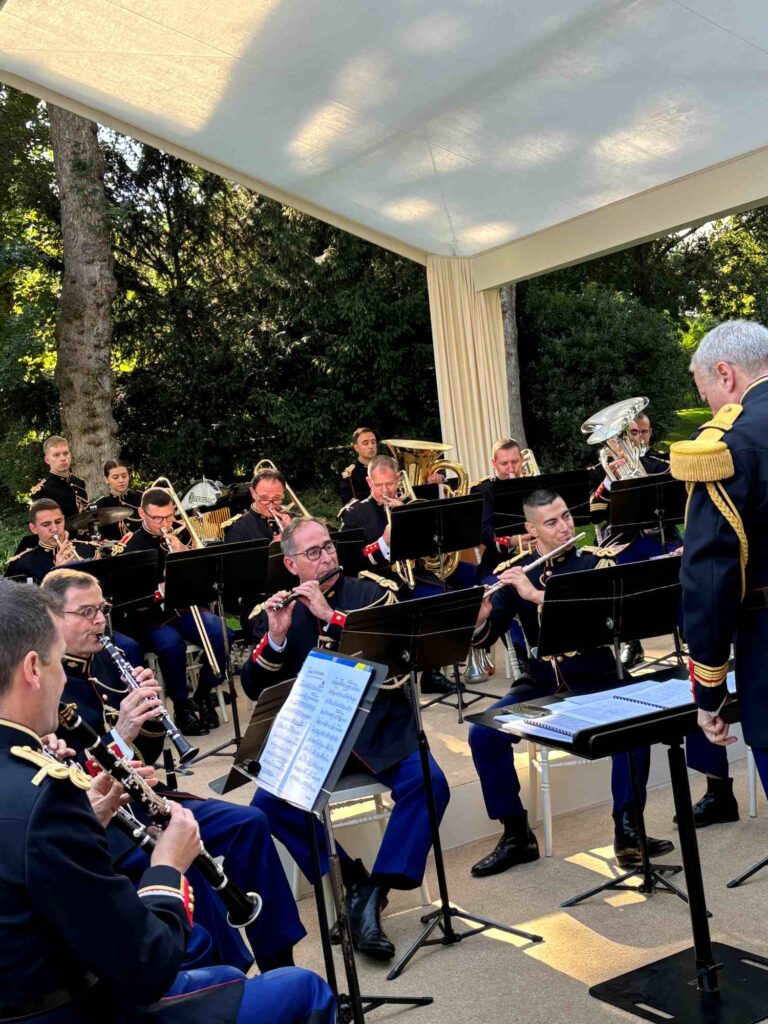
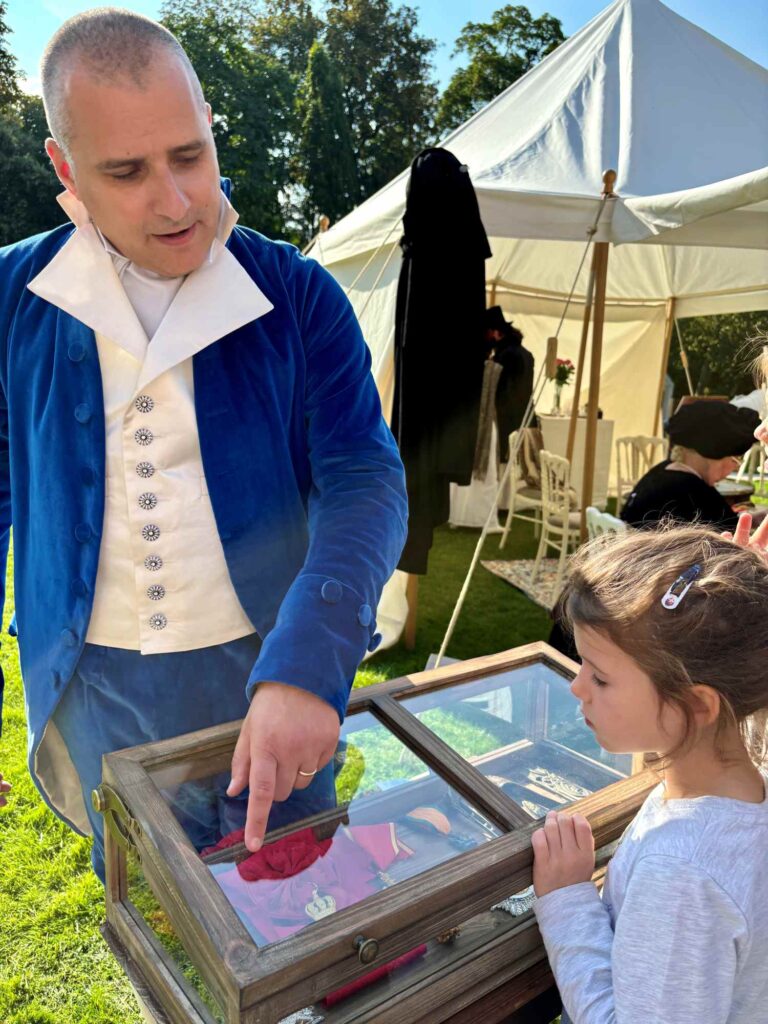
For children, there was a giant poster that they could color at their leisure, which my kids enjoyed. Another favorite was the virtual reality headsets that the palace set up in the gardens. These were suitable for all ages and, though the experience only lasted a few minutes, it provided a fun break from the queue before we continued on our way.
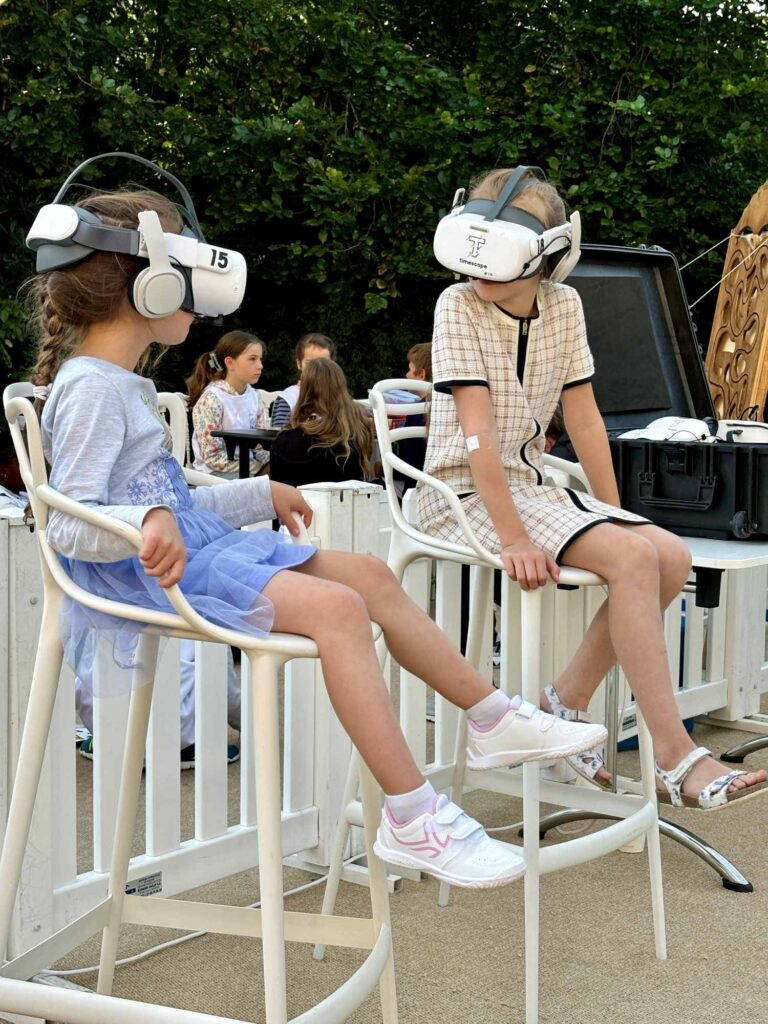
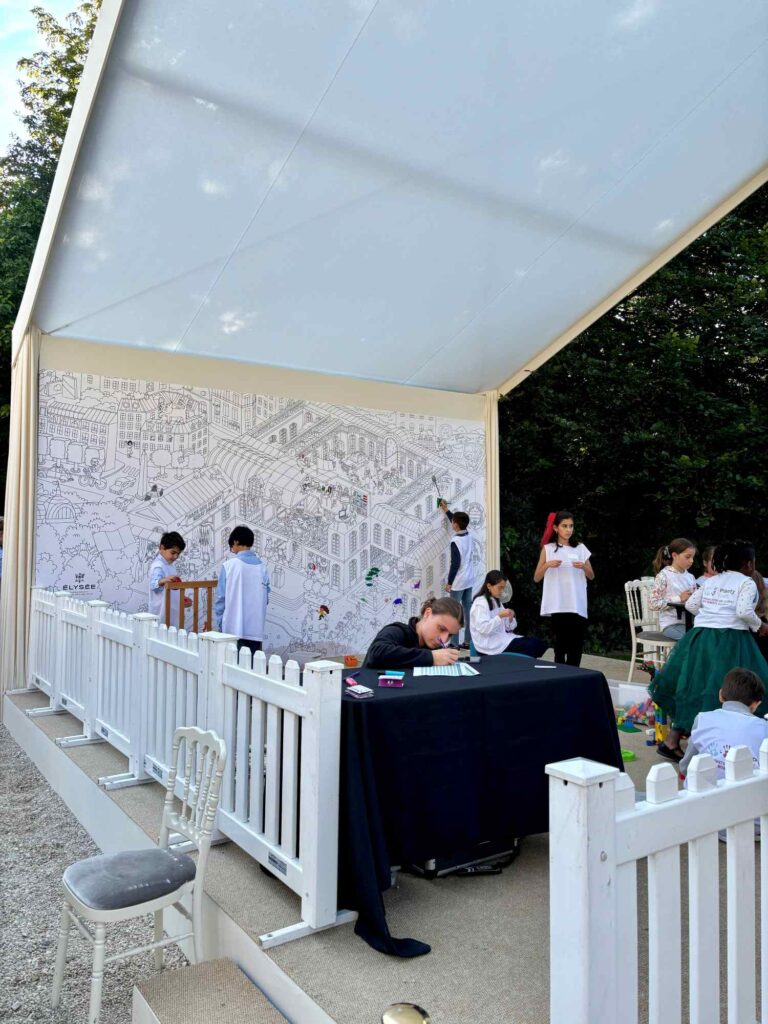
What it’s like inside the Élysée Palace
I’m not sure how much of the palace was off-limits, but it felt like we saw quite a lot of rooms. While we didn’t access the private quarters, we did tour several important spaces, including those used for presidential addresses, dining rooms, and areas where major state events and banquets are held, as well as the Presidential Office.
The tour was very much self-guided. Each room had signs in both English and French explaining its history, architectural details, and notable artworks on display. Additionally, there was an option to scan a QR code for even more information about each room on your phone.
While visiting the Élysée Palace, I was pleasantly surprised to discover that many of the rooms felt quite modern. While some rooms retained historical characteristics—particularly the chandeliers—the actual furnishings were contemporary. It was clear this is a palace actively used in modern times. This room below used to be a library but is now used as a dining room. Presidents Charles de Gaulle, Georges Pompidou, François Mitterrand and Nicolas Sarkozy have posed there for their official portraits.
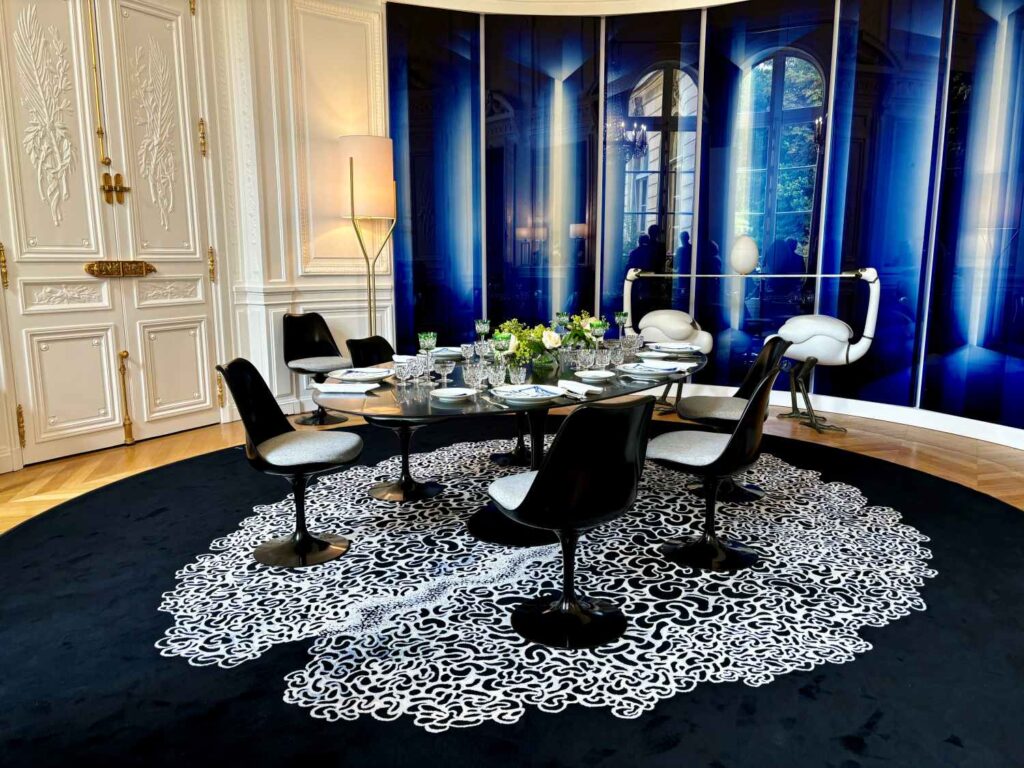
I was particularly interested in seeing the offices of the President and his wife, as well as the Green Room, where the President holds meetings with his closest counselors and chief of staff. Below on the left is a photo of the President’s office—Emmanuel Macron. The photo on the right shows the parlour room currently used as an office by Brigitte Macron, the spouse of the current president.
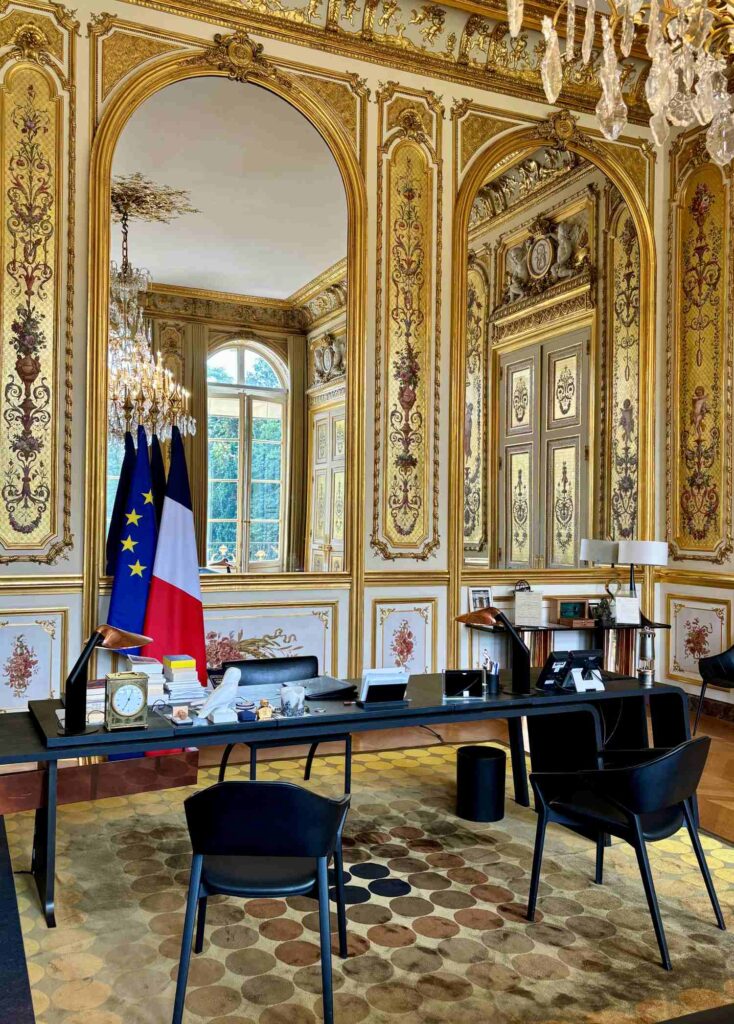
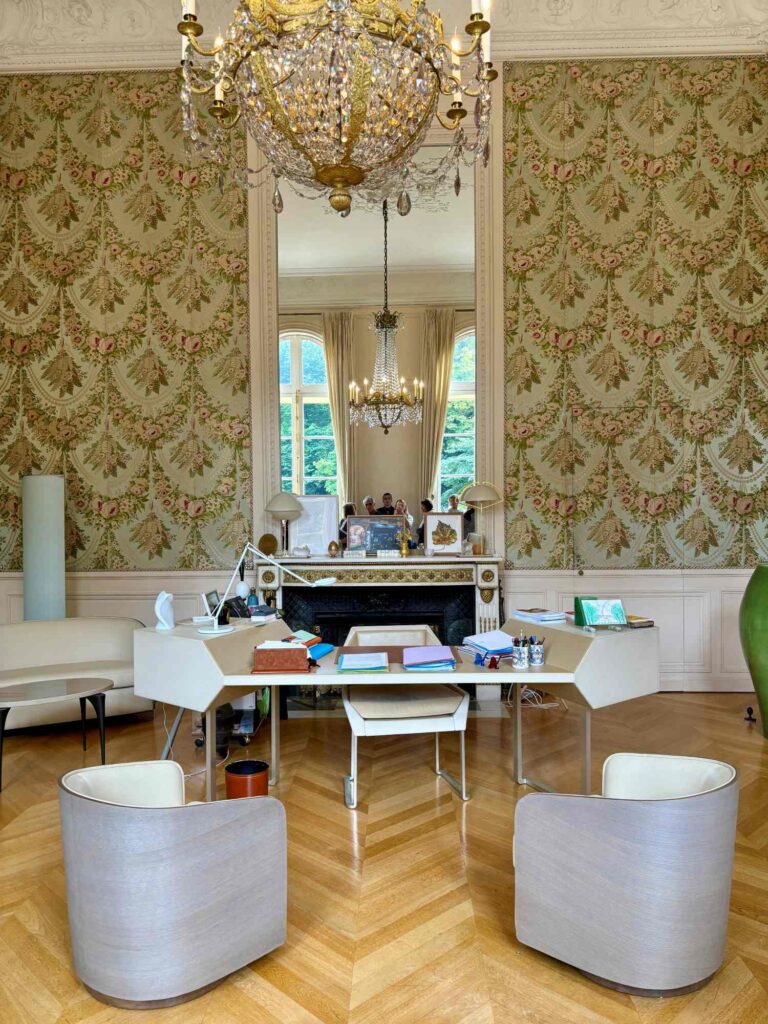
There were many fascinating items on display, including gifts presented to the President over the years from visiting heads of state. One room featured an exhibition of table linens and cutlery used for distinguished guests, including a table set for the visit of U.S. President Joe Biden on 8 June, 2024.
Among the displays was also the Grand Necklace of the Legion of Honour, France’s highest national order, established by Napoleon Bonaparte on 19 May, 1802, to reward service to the country by both military and civilian individuals.
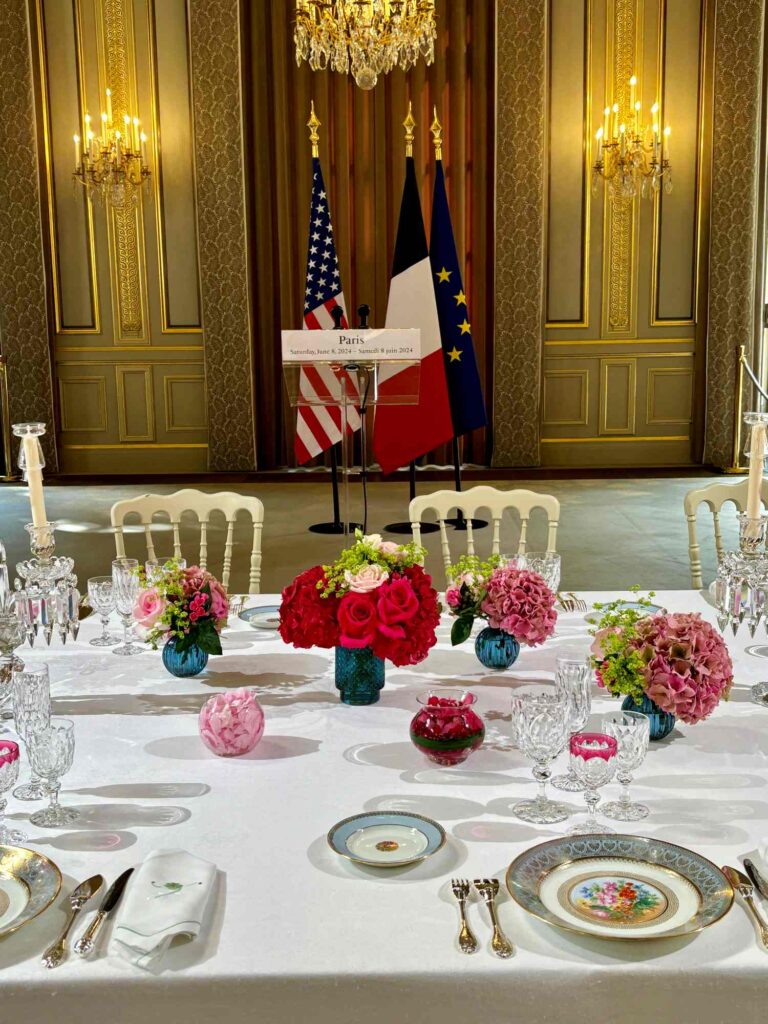
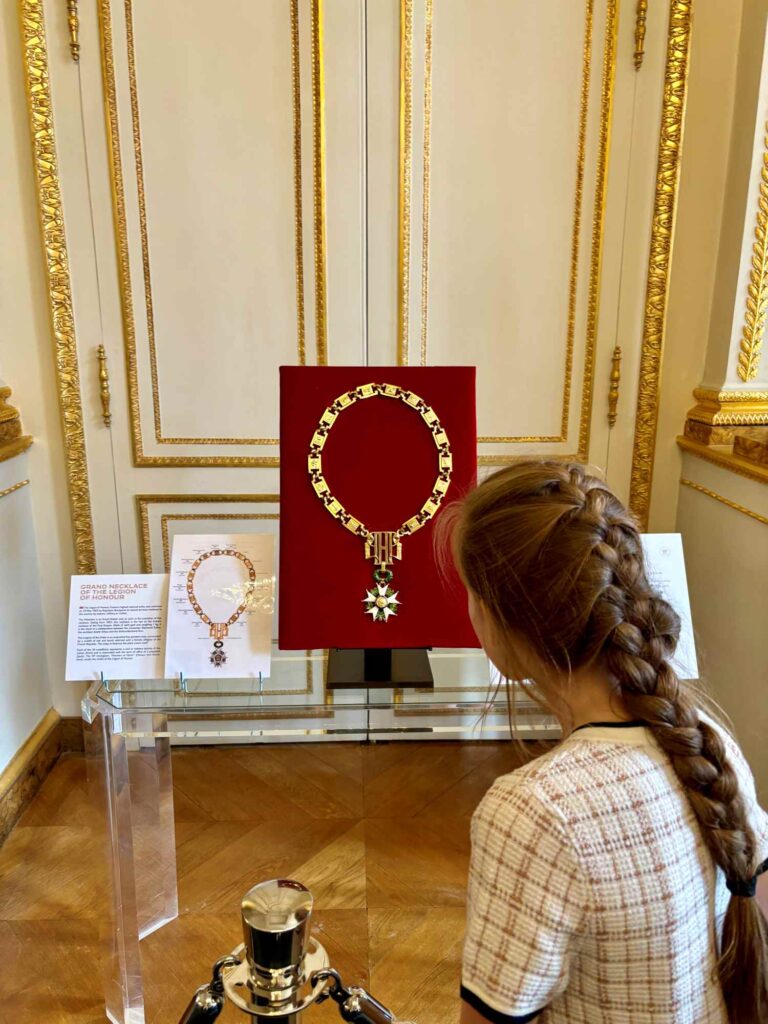
After leaving the palace, we exited into an outdoor courtyard, where we found vehicles used by Presidents of the Republic, as well as the Boutique de l’Élysée. I picked up some special Élysée edition Kusmi tea, Élysée coffee, and olive oil. The boutique offered a variety of souvenirs featuring the Élysée logo, all made in France.
Final thoughts
Visiting the Élysée Palace during France’s Heritage Days was a rare and memorable experience. It offered a unique opportunity to connect with France’s political and architectural history in a deeply personal way. For those fortunate enough to secure a spot, it’s an experience not to be missed.
If you’d like to explore the history and heritage of the Élysée throughout the year, visit the Maison Élysée, located directly across from the palace at 88 rue du Faubourg Saint-Honoré. Open from Tuesday to Saturday, from 11am to 6.30pm, access is free. Here, you’ll find an exhibition, a coffee shop, and a boutique offering a range of French products featuring the Élysée brand.

